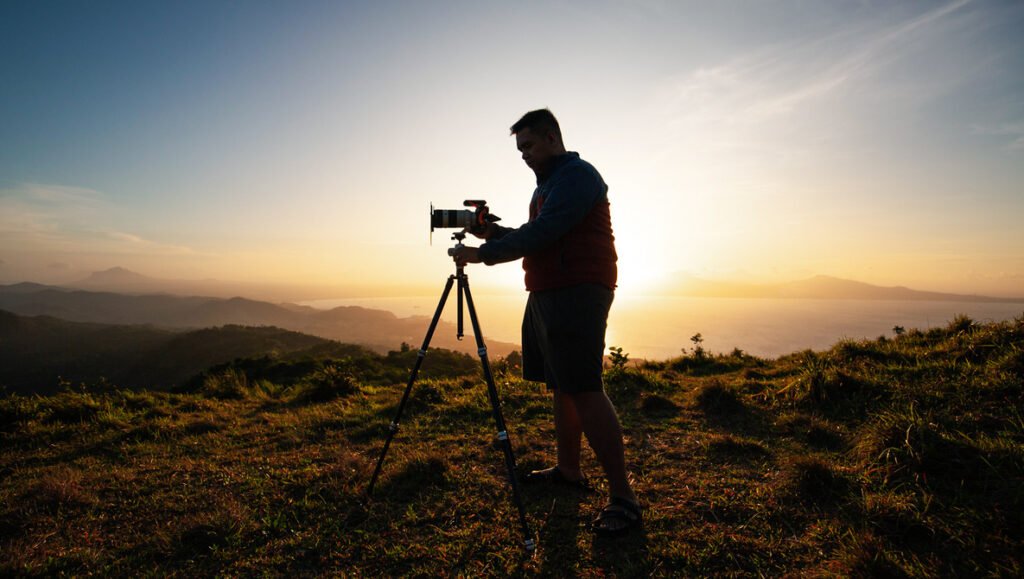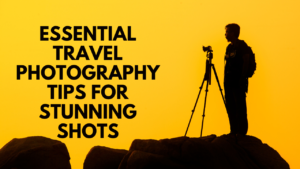Unlock the secrets to capturing breathtaking travel photos with The Ultimate Guide to Travel Photography Tips. This comprehensive guide covers everything from selecting the perfect camera gear and mastering composition techniques to utilizing natural lighting and post-processing for stunning images. Whether you’re a beginner or an experienced photographer, this guide provides expert advice on capturing landscapes, portraits, and action shots while preserving the essence of your journey. Get ready to take your travel photography skills to the next level and create timeless memories through the lens!
Introduction
Travel photography is more than just taking pictures—it’s about capturing moments, emotions, and the essence of places you visit. Whether you’re an amateur or a seasoned traveler, this guide will provide essential tips to enhance your photography skills and create stunning travel images that tell a story.
Choosing the Right Camera and Gear for Travel photography tips
Best Cameras for Travel photography tips
Selecting the right camera depends on your budget, preferences, and travel style. Some of the best options include:
- DSLRs (Canon 90D, Nikon D7500) for high-quality images
- Mirrorless Cameras (Sony A7 III, Fujifilm X-T4) for lightweight and professional-quality shots
- Compact Cameras (Sony RX100 VII, Canon G7X Mark III) for portability
- Smartphones (iPhone 15 Pro, Samsung Galaxy S23 Ultra) for convenience
Essential Lenses for Different Shots
- Wide-angle lens for landscapes and architecture
- Prime lens (50mm) for stunning portraits
- Telephoto lens for wildlife and distant subjects
Accessories to Enhance Your Photography
- Tripod for stability
- Extra batteries and memory cards
- Polarizing filter for better contrast
- Waterproof bag for protection
Understanding Camera Settings
ISO, Aperture, and Shutter Speed Basics
- ISO: Controls the camera’s sensitivity to light
- Aperture (f-stop): Affects depth of field and exposure
- Shutter Speed: Determines motion blur or sharpness
Mastering Composition Techniques
Rule of Thirds
Placing your subject off-center creates a balanced and natural look.
Leading Lines
Using roads, rivers, or fences guides the viewer’s eye toward the subject.
Framing and Perspective
Using windows, arches, or trees can add depth to your photos.
Lighting in Travel Photography

Using Natural Light Effectively
- Golden Hour (just after sunrise and before sunset) for warm tones
- Blue Hour (twilight) for dramatic cityscapes
Capturing Stunning Landscapes
- Use a small aperture (f/8-f/16) for sharp images
- Utilize a tripod for long exposure shots
Taking Candid and Portrait Shots
- Engage with your subject before taking photos
- Use a wide aperture (f/1.8-f/2.8) for blurred backgrounds
Action and Wildlife Photography

- Use a fast shutter speed (1/1000s or faster)
- Focus on the eyes of animals for compelling shots
Urban and Street Photography Tips
- Capture daily life moments in cities
- Respect privacy and cultural norms
Editing and Post-Processing
- Use Lightroom or Snapseed for color correction
- Adjust exposure, contrast, and sharpness for better results
Storing and Organizing Your Photos
- Use external hard drives and cloud backups
- Categorize photos by location and date
Social Media and Travel Photography

- Post high-quality images
- Use relevant hashtags (#TravelPhotography, #Wanderlust)
Common Travel Photography Mistakes to Avoid
- Over-saturating colors
- Ignoring composition rules
- Using too many filters
Travel Photography Safety Tips
- Use a secure camera bag
- Get travel insurance for your gear
Conclusion and Final Thoughts
Travel photography tips allows you to document and relive your adventures. By mastering these techniques, you can create stunning, memorable images that inspire others.




